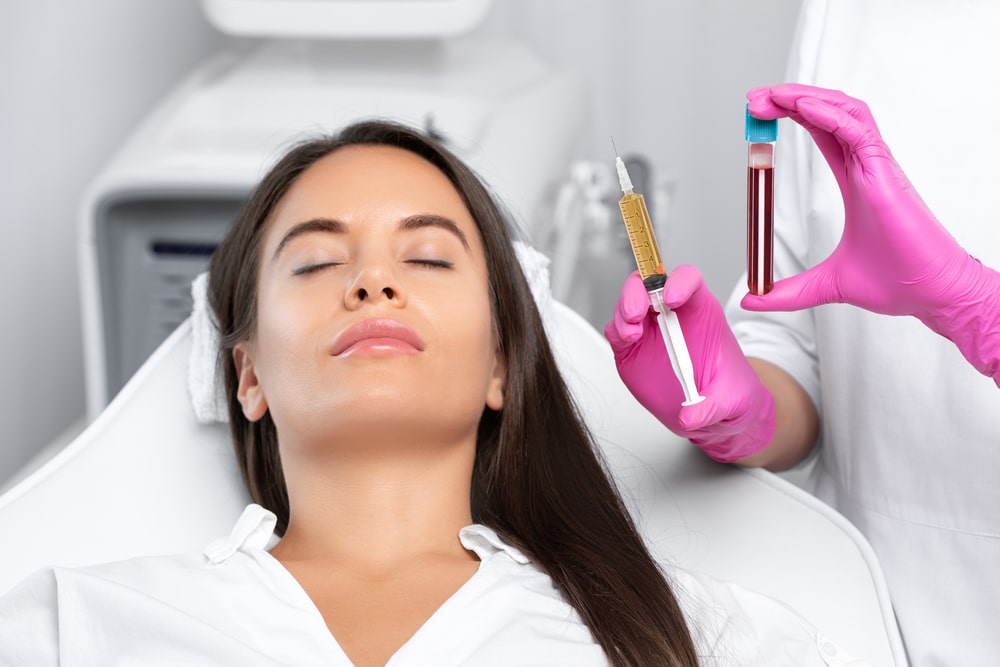Platelet rich plasma (PRP) is a concentrated form of platelet protein that is obtained from your blood. It is obtained by centrifuging your blood and separating the red blood cells and platelets. The platelets contain growth factors and are responsible for hemostasis, revascularization, and cell proliferation.
Growth factors are released by platelet rich plasma
As platelet rich plasma interact with collagen or bloodstream, they release growth factors and intercellular mediators. This secretion is most concentrated during the first hour.
The release of growth factors from PRP may help in the regeneration of injured tissues. Researchers noted that there is a correlation between the concentration of these factors and the number of platelets in the plasma. The release of PRP can improve the healing process in a variety of medical conditions. The level of growth factors in PRP is dependent on the type of PRP and the patient’s health.
They are responsible for hemostasis
The process of clotting blood starts with the formation of platelet rich plasma (PRP). This component of blood contains all the components needed for clotting blood, including calcium ions, enzymes from the clotting cascade, and fibrinogen and pro-thrombin. When activated, thrombin catalyzes the conversion of fibrinogen to fibrin. As fibrin polymerizes, it creates a clot by capturing platelets and concentrating other blood cells.
A typical blood specimen consists of 93% red blood cells, 6% platelets, and 1% white blood cells. The presence of platelets is crucial to the healing process, since they aggregate after bleeding and release growth factors that activate the inflammatory cascade and promote revascularization. The primary purpose of platelets is hemostasis, but they are also responsible for revascularization and construction of new connective tissue. Despite the many functions of platelets, most research has focused on this particular function.
As well as promoting healing, platelets are biochemical stores of various growth factors and signaling molecules. They also participate in tissue recovery after injury, and can even help repair wounds. Using autologous platelet preparation (PRP) is safer than using allogeneous blood. It also requires no antibody formation, making it more acceptable for patients. In addition to promoting tissue repair, PRP also promotes epithelialisation and new capillary growth.
They promote revascularization
Autologous platelet-rich plasma (PRP) has been studied in orthopedic applications and in wound healing. Its platelet counts are usually three to six times higher than the baseline. The plasma contains several angiogenic growth factors, including platelet-derived growth factor BB, transforming growth factor B, and epidermal growth factor.
Platelet-rich plasma therapy is a regenerative treatment, which uses the patient’s own platelets to increase the body’s natural healing process. When injected into a patient’s injured area, platelet-rich plasma releases growth factors that encourage the body to repair damaged tissue. PRP may have a variable effect on tissue regeneration, depending on its concentration.
They promote cell proliferation
The presence of platelet rich plasma (PRP) in tissues promotes cell proliferation and gene expression. These factors may help to heal tissue injuries. Studies have shown that the plasma helps to promote proliferation of human muscle-derived progenitor cells. However, the concentration of PRP in tissues can vary. For more information, please see Table I. Read more on BellaViso.
Plasma with platelets is enriched in growth factors, cytokines, and other proteins. Platelets also release transforming growth factor beta, which is an important factor in cell proliferation.
The process of platelet rich plasma therapy involves using the patient’s own platelets to promote cell growth. The release of these growth factors is a natural process that promotes healing of tissues. In addition to its beneficial effects on tissue growth, PRP also has anti-inflammatory properties.



